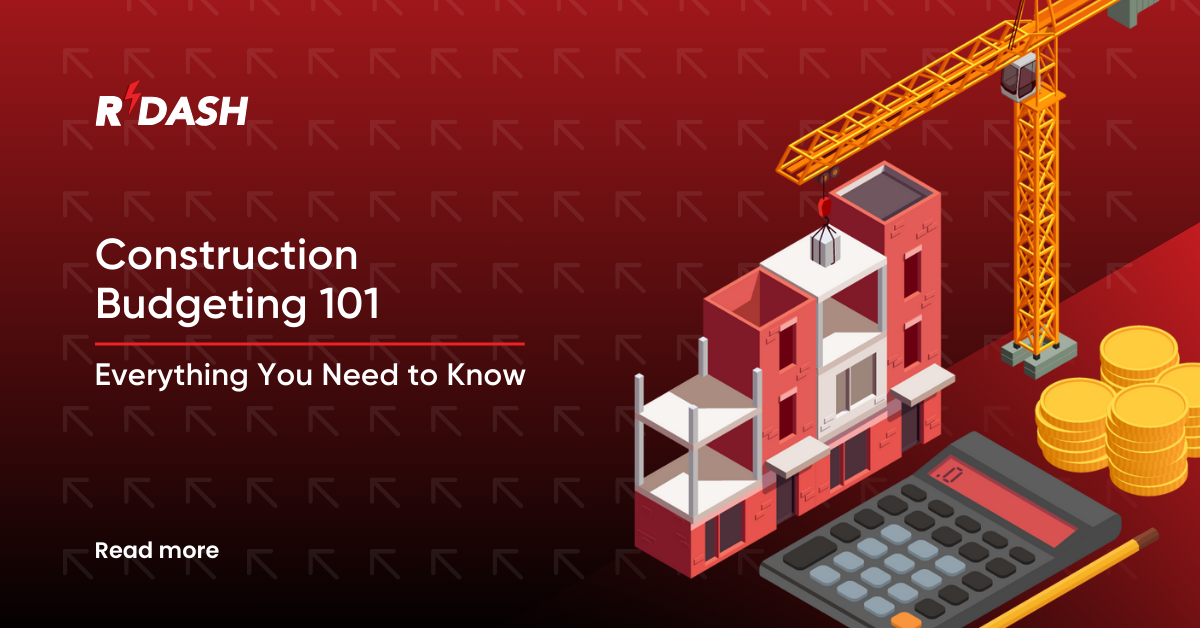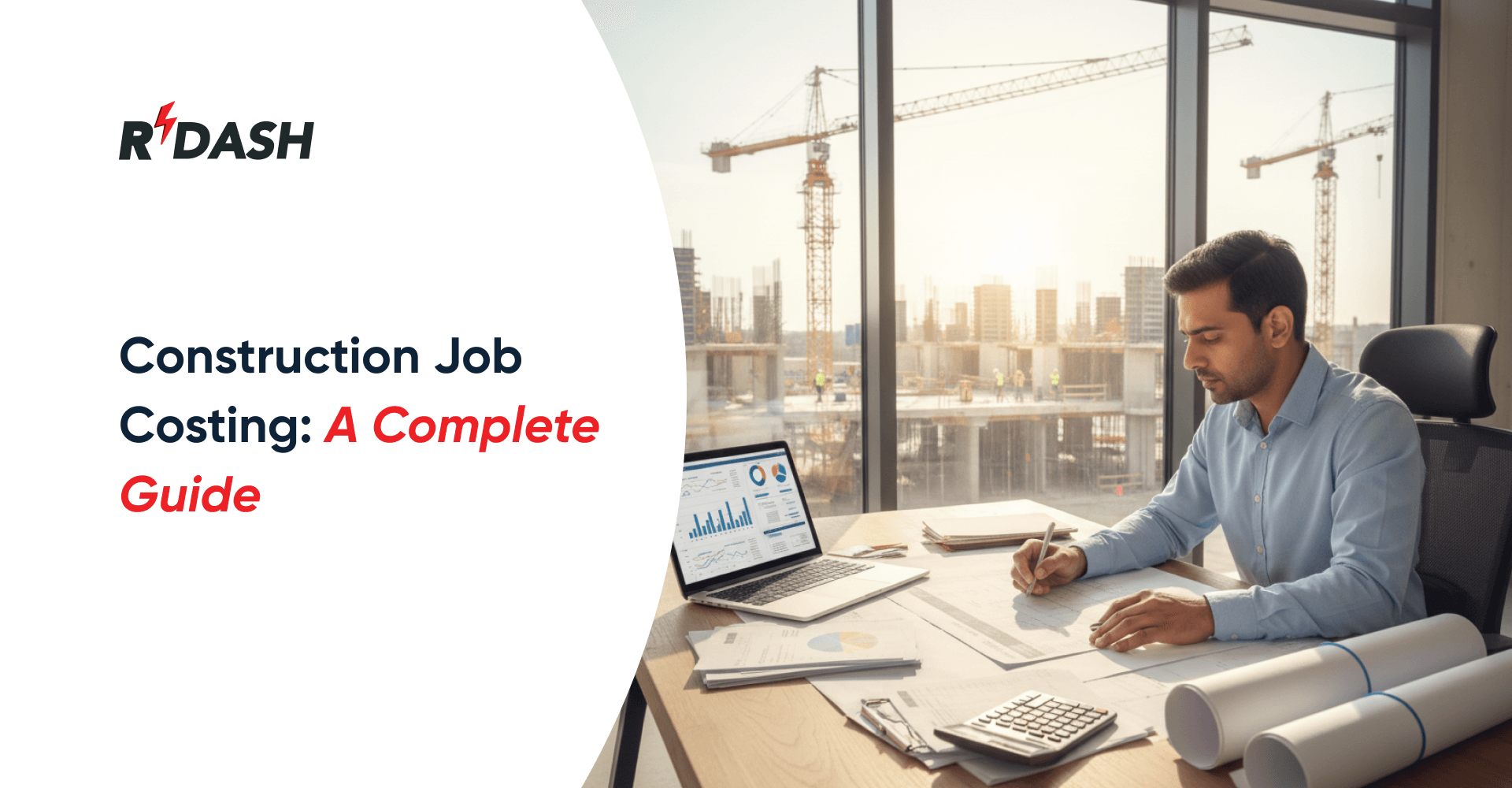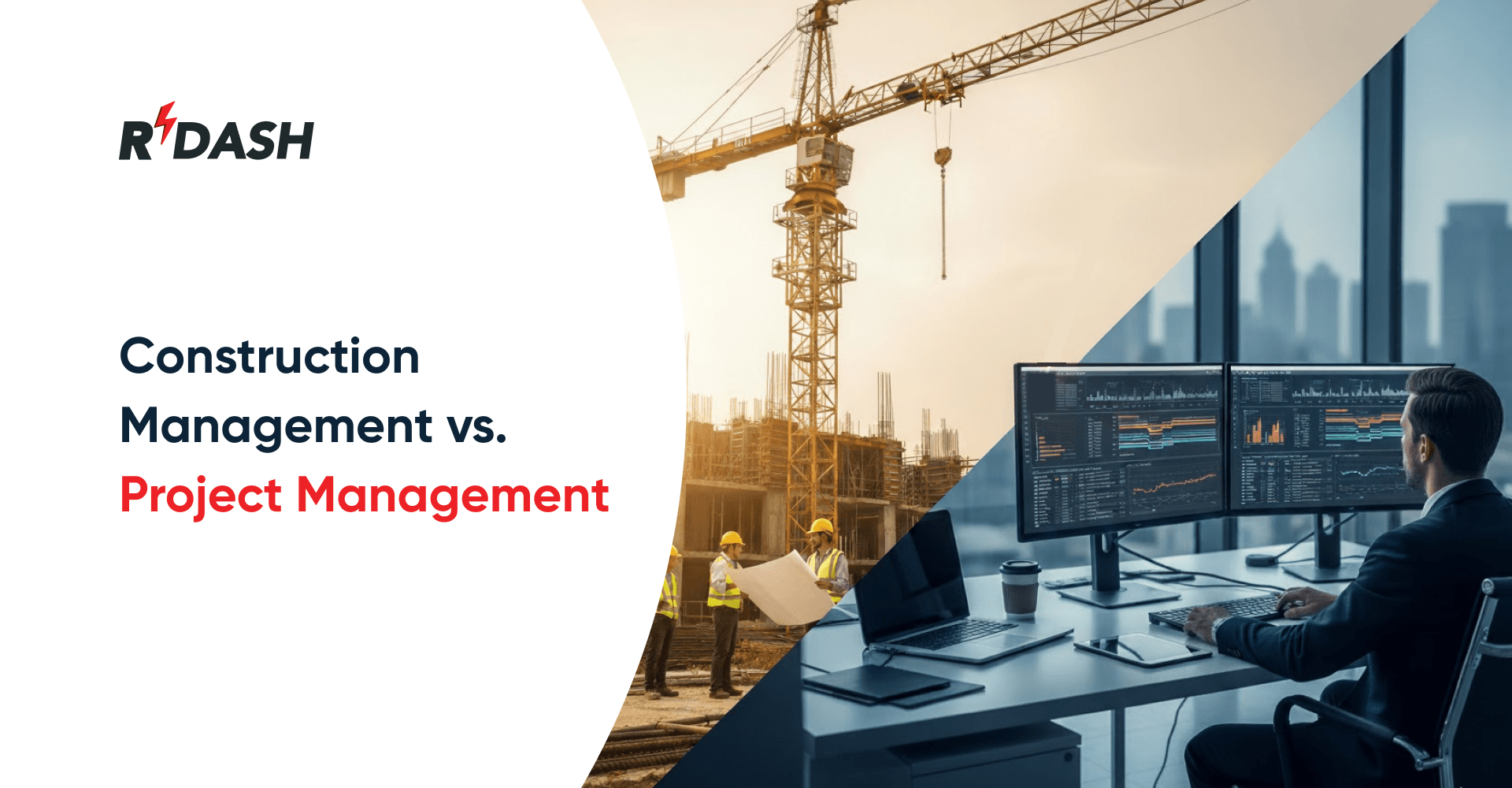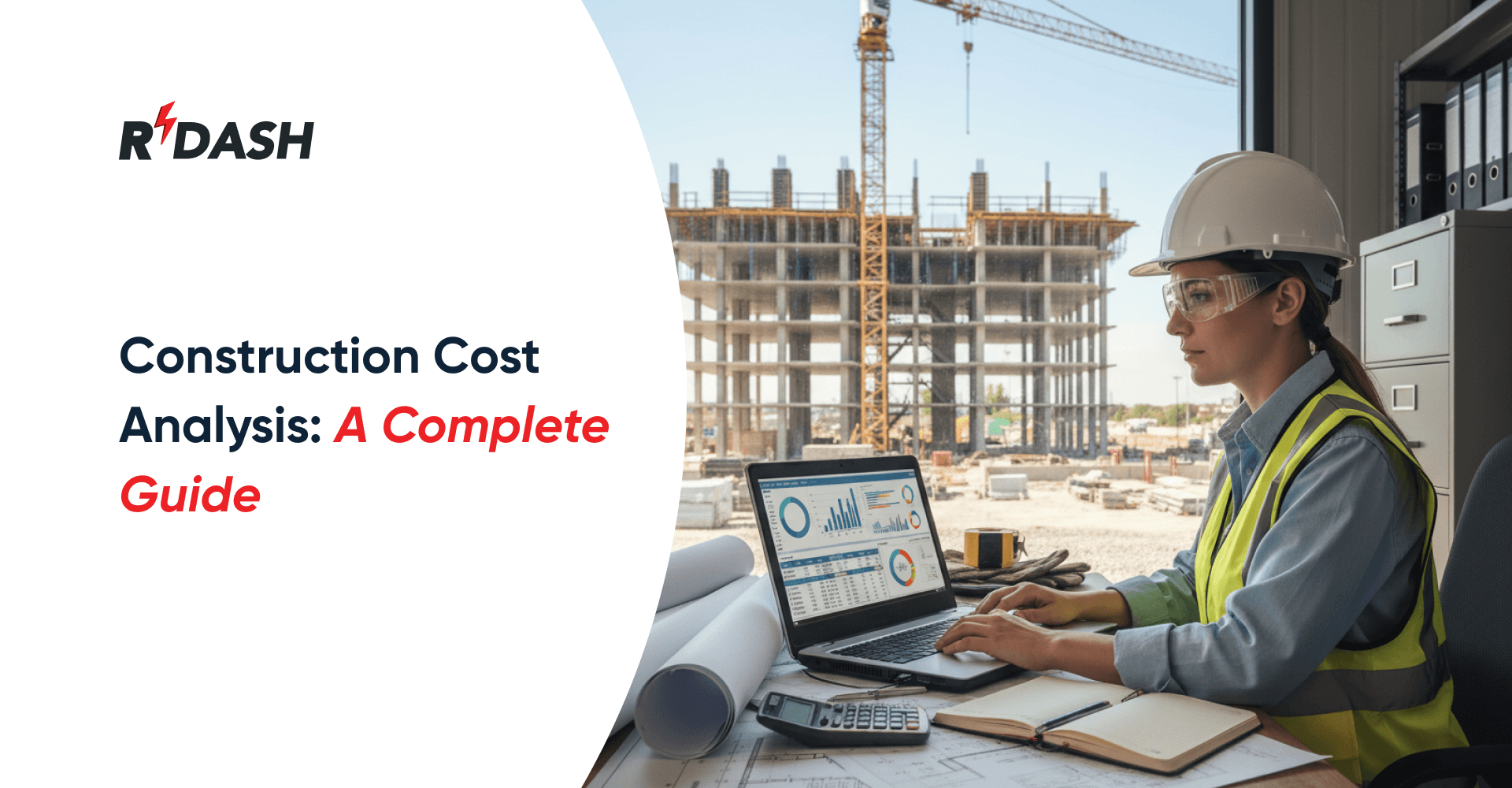What is a construction budget?
This would constitute the construction budget or a financial plan, stating the anticipated costs of the building project. Such a comprehensive document would constitute the master blueprint, guiding expenses and resource management at every point during a construction project lifecycle. All possible costs, from material and labor to administrative and operational, will be included and detailed as cost forecasts.
What makes construction budgeting important?
Construction budgeting is critical for several reasons. Firstly, it provides a roadmap for project expenditures, helping stakeholders maintain financial control and ensure that the project stays within the allocated financial resources. Effective budgeting also facilitates clear communication between contractors, clients, and suppliers, aligning all parties on cost expectations and payment schedules. Furthermore, a well-planned budget helps in identifying potential financial risks early, allowing for timely interventions to mitigate cost overruns.
Main types of construction budgets
Construction budgets vary from one scope of the project to another. There are various types of construction budgets used in the industry, including:
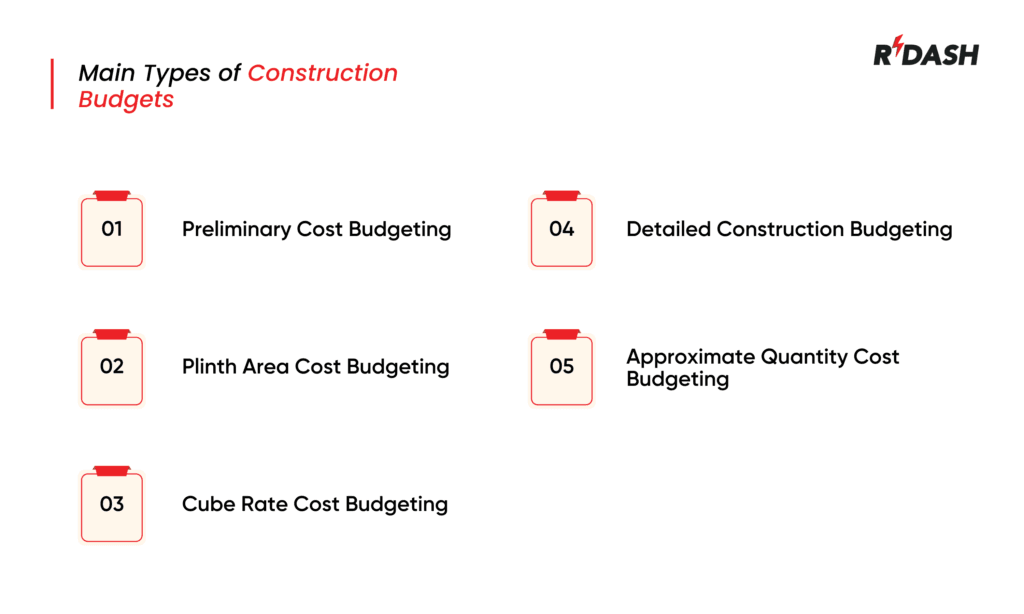
Preliminary Cost Budgeting
This type of budgeting is conducted in the initial stages of project planning. Preliminary cost budgeting provides a rough estimate of the costs of the project, mainly based on design concepts initially and historical data. It forms a baseline for setting up the more detailed budgeting.
Plinth Area Cost Budgeting
It computes on constructed areas the plinth area cost budget. This method multiplies area, either in square feet or square meters, by per unit area cost, which comes as a result of similar projects that have been done previously. It is mostly used for preliminary and early financial planning.
Cube Rate Cost Budgeting
Cube rate cost budgeting is very similar to plinth area budgeting but takes into account the cubic content of the structure, giving a more three-dimensional view of potential costs. This is useful for projects with non-standard heights or where volume plays a big role in cost estimation.
Detailed Construction Budgeting
This is known as the point-by-point breakdown of all the expected costs, as the name seems to suggest. Detailed Construction Budgeting is very essential, especially for large projects since these include all the expenses pertaining to procurement and manpower. Therefore, every aspect of your project will be cost-benefit analyzed.
Approximate Quantity Cost Budgeting
This method approximates rough quantities of materials and other components needed in the project. This is a balanced method, between high-level preliminary estimating and detailed budgeting, but with reasonableness without intensive preconstruction work.
KEY factors affecting construction budgets
The financial aspect of a construction project is influenced by several factors. Some of the most significant factors influencing construction budgets are:
Market Conditions
A major portion of the budget depends on the market condition. The cost of labor as well as material varies along with the changes in supply and demand.
Project Complexity
The scope and complexity of a project will determine how much it costs. Generally, projects are larger in scope and more complex and require much more resources and more expensive materials and specialized labor inputs, hence costing more.
Regulatory Requirements
Local, state, and federal regulations form one aspect that contributes to the construction cost. Such includes safety standards, environmental regulations, and building codes.
Site Conditions
Another condition liable for variation in costs is the site of the project. The soil & water conditions, and accessibility can pose problems that increase workloads and require more resources.
Resource Availability
Skilled labor and material availability may affect a project’s cost and timing. Shortages in the skilled labor force or material delivery delays can increase the cost through longer project duration and overtime wages.
Contractor Expertise
The experience level of the contractor and their ability to manage projects efficiently can significantly influence the budget. Experienced contractors are likely to provide more accurate estimates and manage resources better, which can lower costs.
Types of costs in construction budgeting
With construction budgets, these usually include various categories that need to be addressed:
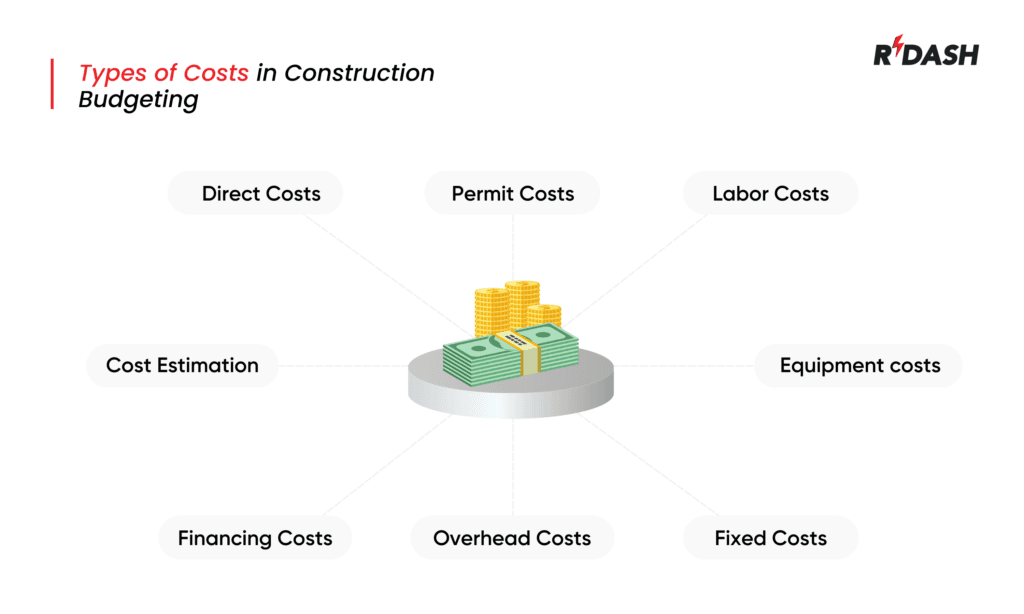
Direct Costs: They directly relate to the physical activities of construction. Such costs include raw materials, labor cost for building up the entire structure, and equipment used onsite.
Direct costs are variable since they change with the scope and requirements of the project.
Labor Costs: These fall under wages paid to skilled and unskilled laborers directly on-site. Labor costs will obviously be determined by the size of the project, skills required, and the conditions of the labor market. The above further comprises payments to third-party subcontractors hired for specific works.
Overhead Costs: Overhead costs are indirect costs supporting the construction process but not tied to the actual construction itself. Some examples include salaries and office expenses of administrative people, utilities, and running costs for headquarters or regional offices of a construction company.
Permit Costs: Permit costs are fees paid to the local government for legal permission to start construction. These costs can be significant and vary greatly based on the project’s location and complexity, as well as the local regulations.
Cost Estimation: This is the analytical process of predicting the total costs for a construction project. Proper cost estimation is very key to developing a realistic budget and involves analyzing all those probable costs in detail.
Financing Costs: When financing is involved with a project, financing costs generally include the interest and other charges related to the construction loan. These are effects that can greatly influence the overall budget, depending on the terms of the financing and the durations of the project.
Equipment costs: Cost of purchasing or renting machinery and tools for a construction project. The equipment costs depend on how long a construction project runs and how much the equipment required for the project is in demand.
Fixed Costs: These are costs that do not change with the project duration and intensity. Examples of fixed costs include rent for offices, premiums on insurance schemes, and permanent administrative staff with a fixed salary.
How to create a construction budget
Developing a construction budget is a systematic approach to include all the financial aspects of the project.
Define the Project Scope: The scope of work that is clearly defined with detailed specifications and drawings helps explain all necessary budget requirements.
All Cost Identification: All expense data will therefore be obtained across categories by contacting suppliers, subcontractors and other stakeholders.
Use historical data: the use of benchmarks developed from similar past projects will help in establishing budgeting expectations.
Incorporate Contingencies: A contingency fund should be incorporated into the budget in the range of 5-10% to fund the unpredictable costs and price changes.
Update and Review: Budgeting should be a process that is revisited and updated as the project evolves and more accurate information becomes available.
Utilize Technology: Construction management software like RDash can be very useful in tracking budget performance and making real-time adjustments, as well as in managing contracts and change orders.

